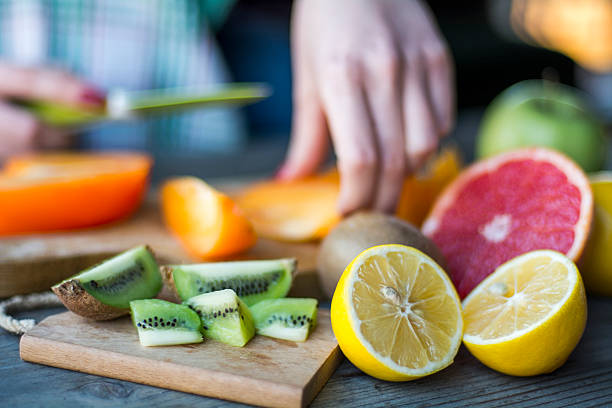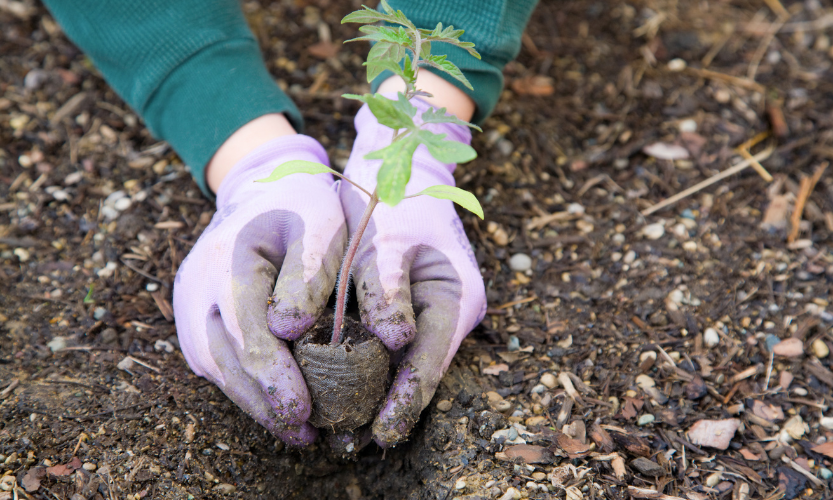The Benefits of Seasonal Eating: Why You Should Eat with the Seasons
Have you ever wondered why food tastes better at certain times of the year? That juicy summer tomato or crisp autumn apple isn’t just a coincidence - it’s the power of seasonal eating. Not only does eating with the seasons enhance flavour, but it’s also better for your health and the planet. Let me share how embracing this simple practice has transformed my meals and overall well-being.

I used to think seasonal eating was just another trend, like kale smoothies or overnight oats. But once I gave it a try, I realised that it’s not just about following a trend - it’s about rediscovering how food is supposed to taste, how it naturally fits into our lives, and how it connects us to the world around us.
Growing up, I didn’t pay much attention to what was in season. In the Netherlands, like in many places, we’re lucky enough to have supermarkets stocked with nearly every fruit and vegetable throughout the year. Strawberries in winter? No problem. Avocados whenever we like? Easy. But, after years of mindlessly picking up out-of-season produce, I started to notice something: the flavour was lacking, and I wasn’t feeling great.
That’s when I started to experiment with seasonal eating - and I haven’t looked back since. Here’s why it’s changed my relationship with food and why I believe it could do the same for you.
A World of Flavour Awaits
The first thing that struck me when I began eating seasonally was the flavour. Seriously, I had no idea how bland some of the off-season produce had become to me until I bit into a ripe, in-season peach. It was like a whole new world of taste opened up to me. Seasonal produce is harvested at its peak, meaning it’s full of flavour and nutrients.

Imagine biting into a tomato in the middle of winter - it’s watery, pale, and not all that exciting. Now, picture a tomato ripened in the heat of summer, its skin bursting with deep red juice and flavour. That’s the magic of eating with the seasons - you get to enjoy food at its absolute best.
It’s Not Just About Taste - It’s About Nutrition
Not only did I fall in love with the flavours, but I also noticed how much better I felt after switching to seasonal eating. Fruits and vegetables that grow in their natural season are both tastier and more nutritious. When produce is allowed to ripen fully under the sun, it develops higher levels of vitamins, minerals, and antioxidants.
Eating seasonally made me realise that nature knows what it's doing. During colder months, the earth provides hearty, warming vegetables like squash, sweet potatoes, and carrots, which are rich in vitamin C and fiber - just what my body needs to stay healthy and satisfied. In the summer, it offers hydrating fruits, like watermelon and cucumber, to help me beat the heat. When I started eating the produce provided by the earth each season, it felt as though I was finally eating in sync with my body’s natural needs, and that’s a powerful feeling.

How Seasonal Eating Supports the Environment
I’ll admit, I didn’t initially start seasonal eating for environmental reasons, but once I dug deeper, it became a huge motivator for sticking to the method. Here’s the reality: when we eat out-of-season produce, it has often travelled thousands of miles to reach our plates. It’s picked before it’s ripe, shipped long distances, and stored in cold storage facilities, contributing to a massive carbon footprint.
By eating seasonally, especially when buying local produce, I found I drastically reduced the environmental impact of my diet. Fewer food miles mean fewer emissions, while supporting local farmers means promoting more sustainable agricultural practices. It’s a win-win situation for both my health and the planet.
Making Seasonal Eating Easy
I know it can sound overwhelming to overhaul the way you eat, but honestly, it’s easier to make the switch than you might think. Here’s how I got started:
- Visit your local farmers’ market: This was a game-changer for me. Shopping at my local farmers’ market made it easy to see what was in season, and I could ask the farmers for their recommendations. It’s also a fun way to get out and explore new foods you might not find in your supermarket.

- Keep it simple: You don’t have to turn your life upside down. Instead, start small by incorporating a few seasonal ingredients into your meals. Swap out the strawberries in your winter fruit salad for pears or oranges. Replace that out-of-season lettuce with dark, leafy greens in the fall. Little changes soon add up.
- Preserve the bounty: One thing I love to do is preserve the season’s flavours so I can enjoy them all year long. In the summer, I freeze berries and make jam with ripe peaches, so I can have a taste of summer even in the depths of winter. Canning and freezing seasonal produce is a great way to extend its life and enjoy it whenever you like.
A Deeper Connection to Nature
What I didn’t expect from seasonal eating was how much it would reconnect me to nature. Paying attention to what’s in season increased my awareness of the world around me - the changing weather and the cycles of growth and harvest. It’s made me feel more grounded, as though I’m part of the rhythm of the earth.
When I eat asparagus in spring, I know it’s a fleeting pleasure that I’ll have to wait another year to experience again. The same goes for those juicy autumn apples. It’s this awareness that has allowed me to incorporate more mindfulness in my meals. Rather than taking food for granted, I appreciate the time and effort that went into growing and harvesting it.

Why You Should Try Eating Seasonally
Seasonal eating isn’t just a trend, but a way of reconnecting with food in its most natural form. The benefits go far beyond taste - you’ll be getting better nutrition, supporting sustainable farming practices, and helping the planet. Plus, it’s a fantastic way to explore new foods and introduce variety to your meals.
If you’re curious about how to start, my advice is simple: take it one step at a time. Start by choosing one season - say, spring - and focusing on implementing produce that naturally grows during that time. You’ll be amazed at the difference in flavour, and before you know it, you’ll be looking forward to each new season’s bounty as much as I do.
My Final Thoughts
Switching to seasonal eating was about more than simply improving my meals; it was about changing the way I approached food. It’s improved my connection to nature, helped me to become more mindful of the impact of my choices, and made me more excited about the foods I eat. I encourage you to give it a try and see how seasonal eating can transform your relationship with food. Trust me - once you taste a perfectly ripe summer tomato, there’s no going back.

The writer
I’m Engelien Meijer, a food enthusiast and wellness advocate from the Netherlands. Over the years, I’ve embraced seasonal eating as a way to nourish both my body and soul. Through my journey with seasonal foods, I’ve discovered the joy of eating in harmony with nature, and I hope to inspire others to do the same.
Appendix
From crisp winter leeks to sweet summer cherries - each season has its own culinary treasures. But did you know that following the natural harvest calendar also benefits your health and wallet? Find out why eating seasonally is the key to more flavor and satisfaction in the kitchen.


















Answers